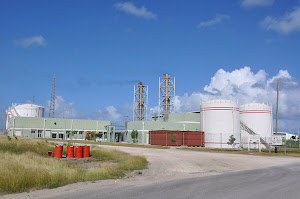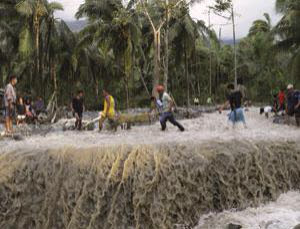The U.N. Food and Agriculture Organization (FAO) projects that the world’s wild fish harvest will fall to 90 million tons in 2012, down 2 percent from 2011. This is close to 4 percent below the all-time peak haul of nearly 94 million tons in 1996.
The wild fish catch per person has dropped even more dramatically, from 17 kilograms (37.5 pounds) per person at its height in 1988 to 13 kilograms in 2012—a 37-year low. While wild fish harvests have flattened out during this time, the output from fish farming has soared from 24 million tons in the mid-1990s to a projected 67 million tons in 2012.
Over the last several decades, as demand for fish and shellfish for food, feed, and other products rose dramatically, fishing operations have used increasingly sophisticated technologies—such as on-vessel refrigeration and processing facilities, spotter planes, and GPS satellites. Industrial fishing fleets initially targeted the northern hemisphere’s coastal fish stocks, then as stocks were depleted they expanded progressively southward on average close to one degree of latitude annually since 1950. The fastest expansion was during the 1980s and early 1990s. Thereafter, the only frontiers remaining were the high seas, the hard-to-reach waters near Antarctica and in the Arctic, and the depths of the oceans.
The escalating pursuit of fish—now with gross revenue exceeding $80 billion per year—has had heavy ecological consequences, including the alteration of marine food webs via a massive reduction in the populations of larger, longer-lived predatory fish such as tunas, cods, and marlins. Unselective fishing gear, including longlines and bottom-scraping trawls, kill large numbers of non-target animals like sea turtles, sharks, and corals.
As of 2009, some 57 percent of the oceanic fish stocks evaluated by FAO are “fully exploited,” with harvest levels at or near what fisheries scientists call maximum sustainable yield (MSY). If we think of a fish stock as a savings account, fishing at MSY is theoretically similar to withdrawing only the accrued interest, avoiding dipping into the principal.
Some 30 percent of stocks are “overexploited”—they have been fished beyond MSY and require strong management intervention in order to rebuild. The share of stocks in this category has tripled since the mid-1970s. A well-known example of this is the Newfoundland cod fishery that collapsed in the early 1990s and has yet to recover.
This leaves just 13 percent of oceanic fish stocks in the “non-fully exploited” category, down from 40 percent in 1974. Unfortunately, these remaining stocks tend to have very limited potential for safely increasing the catch.
These FAO figures describe 395 fisheries that account for some 70 percent of the global catch. Included are the small minority that have undergone the time-consuming and expensive process of formal scientific stock assessment, with the remainder being "unassessed" fisheries. There are thousands more unassessed fisheries, however, that are absent from the FAO analysis. In a 2012 Science article, Christopher Costello and colleagues published the first attempt to characterize all of the world’s unassessed fisheries. The authors report that 64 percent of them were overexploited as of 2009.
The top 10 fished species represent roughly one quarter of the world catch. Nearly all of the stocks of these species are considered fully exploited (most of these fish have more than one geographically distinct stock), including both of the major stocks of Peruvian anchovy, the world's leading wild-caught fish. Stocks that are overexploited and in need of rebuilding include largehead hairtail—a ribbon-like predator caught mainly by Chinese ships—in its main fishing grounds in the Northwest Pacific. (See data.)
Despite the unsustainable nature of current harvest levels, countries continue to subsidize fishing fleets in ways that encourage even higher catches. Governments around the world spend an estimated $16 billion annually on increasing fleet size and fish-catching ability, including $4 billion for fuel subsidies. Industrial countries spend some $10 billion of that total. More than $2 billion is spent by China, whose 15-million-ton catch is nearly triple that of the next closest country, Indonesia.
More



















